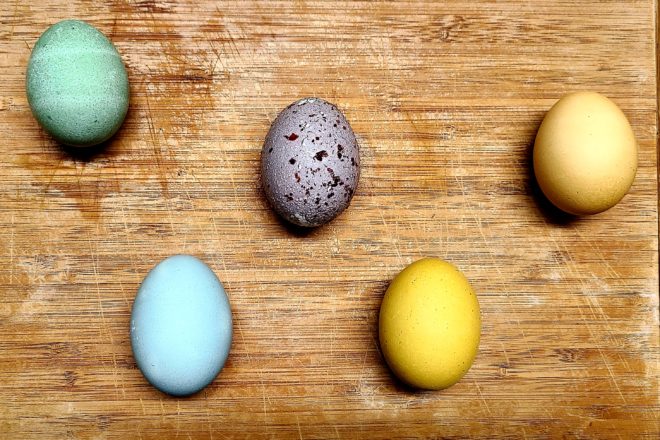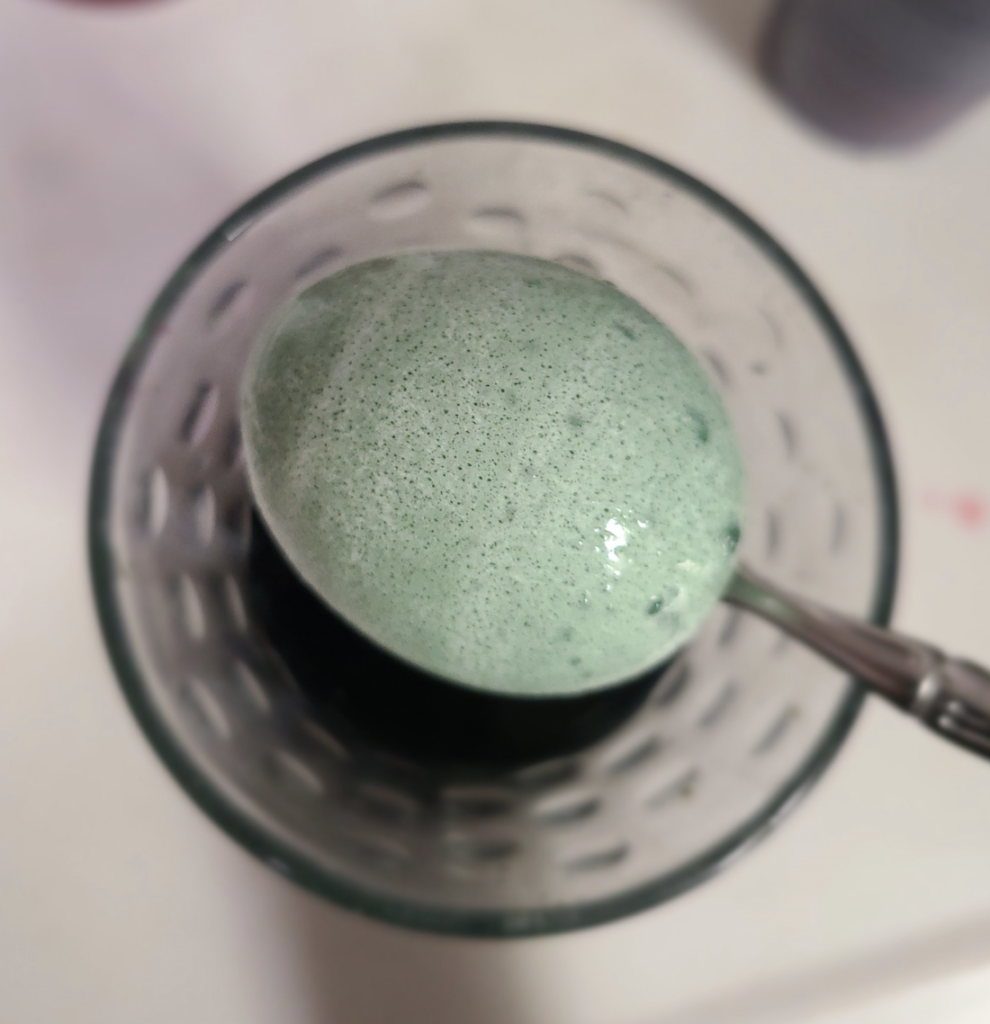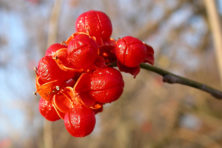Naturally Colorful
- Share
- Tweet
- Pin
- Share

Try dying eggs using natural materials from your yard and kitchen
Dying eggs is a time-honored spring tradition – an activity enjoyed by kids and the young at heart. Simple to do and fun for all ages, experimenting with natural dying agents can create one of the most memorable and unusual Easter baskets ever to grace your holiday table. Best of all, you likely already have these materials in your yard or kitchen.
The basic natural-dye recipe is simple and inexpensive to make. Simply gather your materials, then chop or mash any plant material into small pieces. Combine those materials in a pot with 2 cups of water, bring it to a boil, then lower the heat and allow the mixture to cool.
Once cool, strain the liquid, discarding the pieces of plant or natural dye agent. Add 2 tablespoons of distilled white vinegar, pour the liquid into a deep glass bowl or wide-mouthed Mason jar, and let your creativity get to work!
The results will depend on what color egg you use (white produces the most vibrant results), how concentrated the dye is and how long you leave the egg submerged. To be safe, add more natural material rather than less when making the dye solution.
Now for the fun part: gathering the materials to color the eggs. Here are a few ideas to get you started.
Tip: For every dozen eggs you want to color, plan on making at least four cups of dye solution.

The Golden Egg
Natural ingredient: turmeric
For more impressive results, use a larger variety of egg, such as a duck or goose egg.
1 cup water
1 cup coffee
2 Tbsp turmeric
2 Tbsp distilled white vinegar
Tip: For deeper, more vibrant colors, let the eggs soak in the dye solution for up to an hour.

Purple Eggs
Natural ingredient: hibiscus flowers
If you can’t find dried hibiscus flowers, loose-leaf hibiscus tea also works and creates a lovely speckled appearance. For the deepest color using this hue, let the egg soak for up to an hour.
1/4 cup dried hibiscus flowers (or hibiscus tea)
2 cups water
2 Tbsp distilled white vinegar

An Egg of Many Colors
Natural ingredient: blueberries
Blueberries produce an array of hues depending on the mordant you add to the dye solution.
3 cups water
1/4 cup blueberries, mashed
3 Tbsp distilled white vinegar
In a medium saucepan, combine the water and mashed blueberries. Bring to a boil; then strain the mixture into a large bowl and let it cool. Add the vinegar.
Depending on how many colors you want to create, divide the solution equally among two or three containers.
For light-blue eggs, use the dye solution as is. For pastel-pink eggs, add a teaspoon of cream of tartar. For bright-green eggs, add a teaspoon of baking soda.
Neutral Beige Eggs
Natural ingredient: coffee
Coffee creates a muted beige to a light-brown color. The longer you let the egg soak, the deeper the shade.
1/4 cup ground coffee
2 cups water
2 Tbsp vinegar
Combine the ground coffee and water in a medium saucepan. Bring to a boil; then let cool. Strain mixture into a large bowl. Add the vinegar.
Inedible Dye Solutions
The following dye agents are easy to collect outdoors and produce stunning colors, but the eggs should not be consumed afterward.
Natural ingredient: pine cones
A dyebath made from pine cones produces colors varying from honey to orange red. Let the eggs sit in the solution for up to three hours for the most vibrant results.
8-10 pine cones
2-3 cups water (or enough to cover the pine cones)
2 Tbsp vinegar
Place the pine cones in a large saucepan and cover with water. Bring to a boil; then let cool. Remove the pine cones from the water and set aside. Pour the water into a large, deep bowl or wide-mouthed Mason jar. Add the vinegar.
Tip: The pine cone dyebath can stain, so use an old saucepan and wear an apron or old shirt when using it.
Natural ingredient: acorns
Different oak trees produce different results, ranging in color from a calming light beige, to a cool gray, to an eye-catching teal blue.
20 acorns, ground
2 cups water (or enough to cover the acorns)
2 Tbsp vinegar
Using a blender or food processor, grind the acorns. Place them in a medium saucepan and cover with water. Bring to a boil; then let simmer for an hour or longer, until the desired color is achieved.
Strain the mixture into a large, deep bowl or wide-mouthed Mason jar and let cool. Add the vinegar.
Tip: Soak the acorns before grinding to make them softer.

